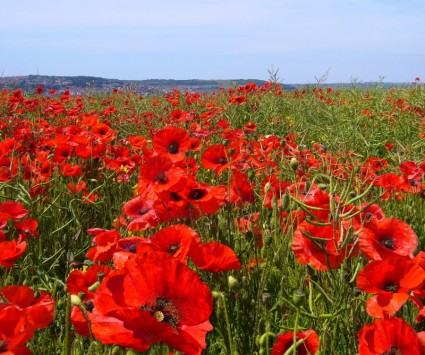
Remembering the Brave on November 11th
Most of us will pick up a poppy on our way out of the local grocery store or bank by donating a coin or two and pin it on our jacket as a sign of respect for our soldiers. On November 11th we will remember the brave men and women who died in the line of duty for our country.
When we look around our neighbourhoods today, our community is made up of people from a variety of cultural backgrounds many of whose ancestors served in the Canadian Army during World War I. Aboriginal Canadians, Chinese Canadians and Sikh Canadians all participated in the line of duty in the war to end all wars.
Many Native communities were not supportive of the war effort as they wanted Great Britain to recognize them as independent nations first. This was not granted and the Aboriginals were exempted from the Compulsory Military Service Act in August 1917. Nonetheless nearly 4,000 Aboriginals (Inuit, Métis, and other First Nations Canadians) and many of them from isolated and remote areas of Canada left the comfort of their homes and families to serve in the Great War.
About 300 Chinese Canadians voluntarily enlisted during World War I even though they were denied their fundamental rights by the Canadian government of voting and entering certain professions. Chinese Canadians were also not conscripted as part of the Military Service Act.
There is only a record of 10 Sikh Canadians who fought in WWI though thousands of Sikhs from India fought in Europe for the British Empire. One of these 10 Sikh Canadians was the Victory Medal recipient Private Buckam Singh who came to British Columbia from Punjab in 1907. He had moved to Toronto in 1913 and enlisted in the Canadian Expeditionary Force in early 1915. He died in a Kitchener, Ontario, hospital in August 1919. He was buried in Kitchener’s Mount Hope Cemetery, the only known First World War Sikh Canadian soldier’s grave in the country. All of these brave heroes had one thing in common, loyalty for the country in which they lived in.
Let us pause from our daily tasks tomorrow and remember the sacrifice and service of men and women who have lost their lives so that we might live our lives in peace and security. Please participate in your local Remembrance Day ceremony. Check out the list of events the City of Vancouver will be hosting tomorrow.
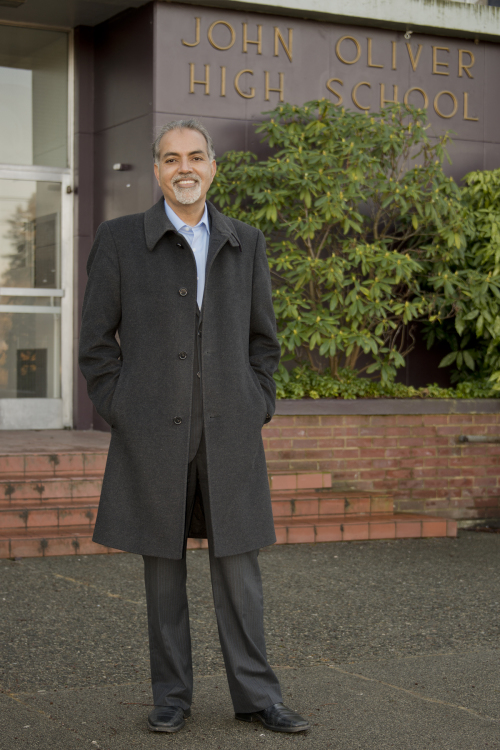
10 Things You Didn’t Know about South Vancouver
10 Things You Didn’t Know about South Vancouver
South Vancouver is very dear to my heart. It is where I have spent most of my life, where I graduated high school, where I’ve worked many jobs, and where I met my wife. Like many other immigrants to Vancouver, South Vancouver has played an important role in my life, and yet I am always learning more about the area’s vibrant history and current landscape. Here, I share 10 interesting facts about the area that you might not know:
- South Vancouver was originally its own municipality: The original southern boundary of Vancouver was 16th avenue, but settlers began clearing land for farms along the north arm of the Fraser River in the 1860s, and built a narrow clearing through the forest to connect to Granville Townsite (now Vancouver). That clearing would later become North Arm Wagon Road and eventually Fraser Street. The Municipality of South Vancouver was incorporated in 1892, and only amalgamated with Vancouver in 1929.
- South Hill is one of the oldest shopping areas in Vancouver: The stretch on Fraser Street from 41st Avenue to 50th Avenue has been bustling since a streetcar was built down Fraser Street to 49th Avenue in 1909. Some residents remember iconic businesses from that time such as Tom Fox Hardware (est. 1908) and Curry Grocers (est. 1910), and some of the original buildings from that time still stand.
- Speaking of South Hill, the community members have built a fabulous website: The South Hill Community Website is an amazing project, almost like an online community centre, that links to projects, events, and businesses in the area. One of the most impressive projects is Inside Stories, a user friendly and beautiful interactive part of the website where users can click on images of local homes and shops to hear the stories of the residents inside.
- John Oliver Secondary School is one of the oldest in Vancouver: Originally established as South Vancouver High School in 1912, my high school started out as just two surplus classrooms at Lord Selkirk Elementary. A new structure near the current location was built in 1920 on the site of the original Wilson Farm, and the school was renamed John Oliver Secondary School. That building is now called “The Barn” and still stands today behind the current structure. Many alumni like me are proud of J.O. and continue to support projects at the school like the Wonder of Reading program.
- The Ross Street temple was built by the oldest and largest Sikh organization in Canada: The Khalsa Diwan Society was formally established in 1906, making it the oldest Sikh organization in the country. Vancouver’s first Sikh Gurdwara (temple) was built on 2nd Avenue by the Society in 1908 (which means it may be the oldest Gurdwara on the American continent). As the Sikh community in Vancouver grew, a larger temple was eventually necessary and the new construction on Ross Street, designed by renowned architect Arthur Erickson, was completed in 1970.
- The Vancouver South riding has one of the largest immigrant populations in the province: From the earliest days, the area has attracted hard working individuals and families from all over the world looking to build a better future in Canada. Today, 75% of Vancouver South residents are either immigrants or children of immigrants (compared to about 50% in Vancouver as a whole), about one-third of those are of Chinese ancestry, 15% are from India or Pakistan, and a growing population are people with Filipino or Vietnamese heritage.
- Langara College has graduated over 76,000 students: Originally part of Vancouver City College, Langara started in 1965 and moved to its current location on 49th avenue in 1970. In 1994 it was established as an independent public college and now offers a variety of programs for over 21,000 students every year. Since 2007, Langara has recognized the contributions of exceptional graduates with the Outstanding Alumni Award; recipients include journalist Simi Sara, former mayor Sam Sullivan, and acclaimed author Carmen Aguirre.
- Everett Crowley Park in Champlain Heights was built on a landfill: Along with Killarney, the Champlain Heights area in the southeast corner of Vancouver was one of the last areas in the city to be urbanized. The area where the park sits now was originally a coniferous forest housing a natural ravine and waterfall. Later the land was used for hunting and logging and in the 1940s it became the Kerr Road Dump and operated as a landfill until 1967. In 1987 it was re-opened as a park and named for Everett Crowley, a long-time resident of the area who served as a Park Board Commissioner in the 1960s.
- Killarney Market is famous: Killarney Market on the corner on East 49th Avenue is well-known for being one of the only places in the city to find certain Latin American, Asian, and European products along with a wide selection of affordable everyday groceries, fresh baked goods, deli meats, plants and flowers. It is also where Burnaby-born, Grammy-nominated singer Michael Bublé filmed the music video for “Haven’t met you yet”. The video features Bublé singing and dancing throughout the store and parking lot, features a cameo by the West Vancouver Youth Band, and has had over 4 million views on YouTube.
- The River District will eventually house about 15,000 residents: Originally the Canadian White Pine Mill, later known as the East Fraserlands, the River District is an area of over 50 hectares along the Fraser River between Kerr Street and Boundary Road. A big construction project is underway which will include 6000-7000 homes, retail space, offices, an elementary and secondary school, parks, recreational amenities, and more.
The River District project is just one of several such projects underway in South Vancouver. From forest, to farms, to lumber and plywood mills, to family-centered communities, to an outstanding institution of higher education, I love to learn about how the area has grown and changed over the years. South Vancouver is a fascinating part of the city with a very rich history, and much potential for a very bright and prosperous future.
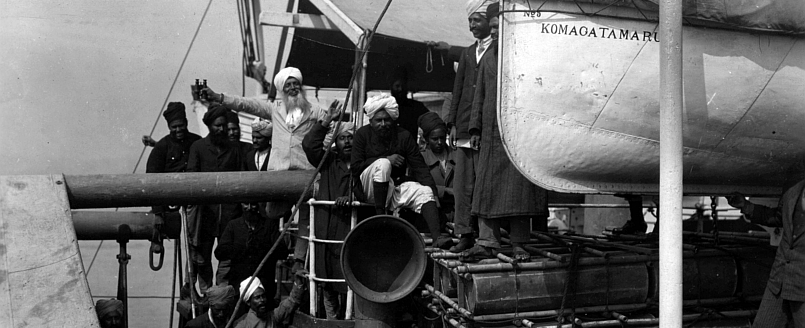
Remembering the Komagata Maru 100 Years Later
Today, May 23rd marks the 100th anniversary of the Komagata Maru ship’s arrival in Vancouver’s harbor.
It was a dark, sad and unfortunate period in Canada’s history.
In the early 1900s, Canada was not a welcoming place for new immigrants and visitors who were not from Europe. Racist and exclusionary policies discriminated against people coming from India, China, Japan and other parts of the world.
The Komagata Maru carried 376 passengers from the Punjab region of British India, all with dreams of settling and building new lives in Canada. But when they arrived in Burrard Inlet, they were denied entry. Instead, they stayed on the ship for two months, starving, and were shown no compassion by the government of that time.
Only 24 passengers were allowed to disembark in Vancouver. On July 23, 1914, the remaining passengers were forced to return to India, and many were persecuted and some killed by the British India government.
This is a critical point in Canadian history and the Indian independence movement for freedom from British rule.

My grandfather, Bishen S. Dhillon (left) with Labh S. Dhillon, Ra Singh and a friend, in California.
I have a deep personal connection to the legacies of the early Indian immigrants and the Komagata Maru passengers. Between 1905 and 1907 my maternal grandfather Bishen S. Dhillon and nearly 20 other men from his village Pandori Ladha Singh and surrounding villages arrived in British Columbia and California. They faced legalized discrimination. Many of them resolved to free India from British rule while seeking justice and equality in Canada. My relatives Naranjan S. Dhillon and Pratap S. Bains left Vancouver in 1913 for India and joined the freedom movement. The courageous Komagata Maru passengers directly challenged the Canadian “Continuous Passage” law which was intended to bar people from British India. It took 37 long years to free India in 1947 and to re-gain the right to vote for Indian immigrants in Canada.
The story of the Komagata Maru passengers lives on. Last September, I had the honour of visiting the Komagata Maru Memorial at Harbour Green Park with Anna Hazare, the internationally renowned Indian leader combatting corruption, promoting government transparency and accountability, and protecting human rights. He became visibly emotional as he read names of some of the passengers listed on the monument and softly said, “I did not know their story fully. They were real freedom fighters for India and for Canada.”
Today, as we remember here in Vancouver and other parts of the country, it is important for all of us to focus on creating a Canada where everyone is accepted regardless of where they come from. As Canadians, we need to be aware of our history so we can move forward, and together building an inclusive, caring and compassionate Canada.
Today, 100 years later, we remember, honour and respect the voyage of the Komagata Maru.
Celebrating Vaisakhi in Vancouver
April 12th, 2014 was a beautiful day to celebrate Vaisakhi in Vancouver.
My wife Rita and I had the pleasure of spending time with family, as well as meeting new and old friends.
Enjoy these photographs from the Vaisakhi parade:
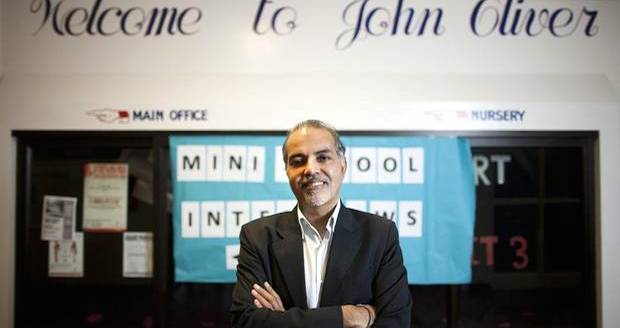
News: Couple Funds High School Literacy Program
Couple’s high school literacy program is one for the books.
By Paul Waldie, originally published in The Globe and Mail on January 31, 2014.
The donors: Barj and Rita Dhahan
The gift: Helping to raise $100,000
The cause: Vancouver’s John Oliver Secondary School
The reason: To fund reading programs for at-risk students
Barj and Rita Dhahan know how difficult it can be for immigrants to fit into a new community. Mr. Dhahan immigrated to Canada from India at the age of 10 while Ms. Dhahan’s parents came from Germany. Both attended John Oliver Secondary School in south Vancouver, an area known for its multicultural makeup, and both saw how new arrivals often fell behind in reading and other subjects.
“I understand that immigrants can have challenges,” Mr. Dhahan said from Vancouver, where he founded Sandhurst Group, a real estate development company. “There are so many different traditions, different cultures and different backgrounds.”
Now successful business people, the couple are leading an effort to raise $100,000 for a literacy program called the Wonder of Reading. The couple and some family members have contributed $18,500 and they hope to raise the remainder through a network of contacts and John Oliver alumni across the country. The money will go toward a breakfast program, night school classes and student-to-student tutoring.
“We have Grade 11 and 12 kids reading to elementary school kids and making home visits,” he said, adding that that encourages parents to read with their children. “Some students need extra help, and this is what we are trying to do. We don’t want any of these kids left behind.”
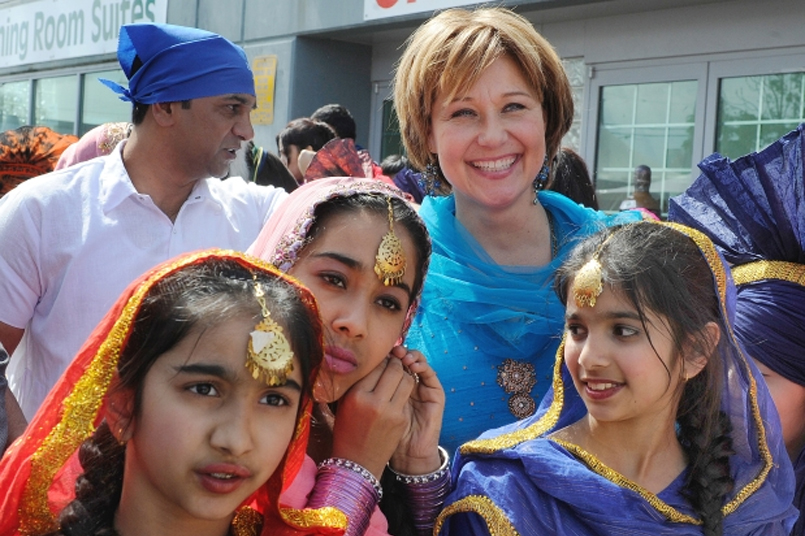
Politicians should try and understand Vaisakhi festival
Opinion: Keep Vaisakhi festival’s true meaning in mind during election
By Barj S. Dhahan, Special to The Vancouver Sun, originally published April 11, 2013
This week, preparations are underway for the popular Sikh festival of Vaisakhi. Sikhs from Amritsar to Abbotsford, Birmingham to Brampton, New York to Nankana Sahib are getting ready to celebrate this historic and deeply spiritual event.
While families are happily anticipating joining in the festivities including kirtan (singing of religious hymns), savouring samosas and Indian sweets, and performing bhangra, B.C. politicians are feverishly jockeying to find the best appearance spots at the Vaisakhi parades (in Vancouver April 13, and in Surrey April 20). They are also vying for the most opportune time to speak in the Sikh gurdwaras (temples). With at least 12 ridings in the province in which the Punjabi Sikh voters will decide the May 14 election outcomes, it is no wonder that politicians will try to curry favour with the Vaisakhi celebrants.
Political appearances at the parades are sure to be met with greater skepticism now than in the past due to the recent “ethnic strategy” controversy. And perhaps they should be. Perhaps we should take a moment to reflect on the true meaning of Vaisakhi so all British Columbians might participate in the festivities in a mindful and meaningful way.
Vaisakhi is a harvest festival and a time for thanksgiving. It has been celebrated in Northern India, Pakistan and other parts of the Indian sub-continent for thousands of years as a time to welcome the season of spring — a time for new life, growth and renewal. On April 13, 1699, Guru Gobind Singh, the 10th and the last Sikh guru, called on his followers to congregate at Anandpur (City of Bliss), Punjab for a special baptism ceremony to mark Vaisakhi. Following a dramatic ceremony, he called on his followers to adhere to certain rules, principles and values, and to courageously devote their lives to justice and equality.
On that day the Khalsa – “community of the pure” – was founded. Baptized Sikhs were to have an external appearance (the keeping of the five Ks — uncut hair, comb, bangle, sword and breeches) symbolizing inner contentment, purity of intention and commitment to pursuit of truth. Behaviours, such as not disturbing the natural growth of hair and not consuming alcohol or other intoxicants and living with restraint, were encouraged.
More relevant to this discussion, all Sikhs, whether baptized or not, are to respect themselves and others, to recognize all people as equals, to earn an honest living, to give to charity, not to cheat or lie, to seek social harmony and to be engaged in the affairs of the world — economic as well as political.
B.C. voters, then, should not be surprised by the nearly 25 candidates of Punjabi-Sikh heritage running in this election. There are at least 12 candidates for the NDP, six for the Liberals, three for the B.C. Conservatives, one for the Greens and one independent.
Vaisakhi is not just a parade or a time to be seen. It is a day to celebrate the values above and to examine our intentions going forward. It is a time for renewal of self and a commitment to work for the greater good.
The Guru called on his followers to self-reflect, to respect their communities, to struggle for equity and equality and to build peace. It is important to reflect on these values and how they may impact our voting choices. These values may help us discern what the important issues are in this election and which party and candidates are best able to address them with a clear vision for the province.
Which party will genuinely work toward environmental sustainability while ensuring economic opportunity for all? How might our vote contribute to creating a safe and respectful community, how will it promote tolerance and inclusion, and how will it help eradicate discrimination based on economic, gender, religious, ethnic or any other difference?
In light of the upcoming campaign with the expected negative attack ads, we would be wise to study and reflect on who might best carry out these values as our representatives and legislators. I hope each participant in this year’s parades will take some time to do just that.
Barj S. Dhahan is national chair of the Canada India Foundation and director of the Canada India Education Society.
This op-ed article was originally published in The Vancouver Sun on April 11, 2013.
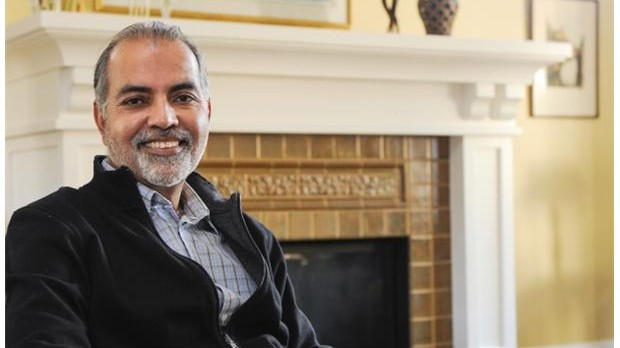
News: Barj Dhahan on business and spirituality
Vancouver entrepreneur Barj Dhahan has found success in business; satisfaction in spirituality.
“I feel fortunate in who I am. My life has been one of … exploration of ideas, incorporation of different thoughts, leading to a greater sense of self-discovery,” he says.
When he was 10, Dhahan, his mother and three of his four sisters left his family’s ancestral farm in the Punjab region of India to join his father in Port Alberni on Vancouver Island.
Budh Singh Dhahan had already been in Canada for almost a decade, working in the lumber industry. He was “very entrepreneurial,” Dhahan says of his dad, who later moved into home construction in Metro Vancouver.
The father’s go-for-it attitude rubbed off on his son. At 57, Dhahan is president of the Sandhurst Group of companies, which specializes in Tim Horton’s outlets, Esso gas stations and commercial real estate development throughout Metro Vancouver and B.C.
However, as much as Dhahan enjoys the challenge of leading a corporation with more than 150 employees, he and his family have probably become best known for their big, imaginative philanthropic ventures.
The Dhahan family’s latest effort led last year to special events in B.C., India and Pakistan, where Dhahan and others announced the world’s first Punjabi-language prize for fiction writing, worth $25,000.
The Dhahan International Punjabi Literary Prize is one of several major non-profit brainstorms of the Dhahan family and the Canada-India Education Society, which they co-founded.
The family’s first major philanthropic project has been a game-changer. It arose in the 1980s when Budh Singh and others helped establish the Guru Nanak Mission Medical and Educational Trust, which now operates a 200-bed hospital in the family’s ancestral village of Dhahan-Kaleran, which is 100 kilometres from the Sikh holy city of Amritsar. In a partnership with the University of B.C. and other organizations, the trust runs an affiliated 1,600-student public school and a program that has graduated about 1,800 nurses and midwives.
During a wide-ranging conversation at the family’s Kerrisdale home, Dhahan said he does not think business should be conducted “to pursue money, but to provide wellness and a good life.”
Even while he explained his route to corporate success, Dhahan emphasized his passion for community, spirituality, the social safety net and the fast changing multicultural experiment that is Canada.
Dhahan is not without criticisms of Canada’s racial past, but he’s grateful for what his family has been able to accomplish here. It was near-despair that drove Dhahan’s father to leave India for Port Alberni in 1959.
It was almost impossible for a decent man at that time to get ahead in the Punjab region of India, Dhahan says. “You either had to be wealthy or crooked. And my father was neither.”
In British Columbia, with its functional economic and political system, Budh Singh had a chance to progress on hard work and merit. As a result, Dhahan doesn’t take for granted Canadians’ general sense of fair play and openness.
The family’s casually elegant home has many architectural features, memorabilia and art, which help highlight some of Dhahan’s values and passions.
Barj and his wife, Rita, believe everyone should integrate fully into Canadian culture. That’s why they intentionally chose not to build a fence around their front yard.
“We must mix and get to know our neighbours. We must cross boundaries,” he says. “In Canada we run the risk of moving into ethnic silos and not talking to each other.”
Dhahan is concerned some newcomers from India and China can now come to Metro Vancouver and spend all of their time within their own ethnic enclaves, without having to inter-connect or learn English.
Another revealing object in the family’s living room is a black-and-white photo of one of Dhahan’s turbaned grandfathers in California in 1923. It shows the family’s roots in both South Asia and North America.
The high-ceilinged entranceway also features an imposing painting of early 19th-century Sikh ruler Ranjit Singh, whom Barj admires for his “remarkable” ability to run an Indian kingdom based on peace, fairness and prosperity.
Also on display is a small painting of an icon of Mary and Jesus as a baby. It was painted by Rita, who was raised in B.C. in a Mennonite family. The icon points to the deep commitment both Rita and Barj show toward their spiritual lives, which blend elements of Sikhism, Christianity, yoga and other traditions.
Before explaining Barj’s views on multiculturalism, spirituality and social values, however, it’s worth highlighting how he became a success in business.
Dhahan and Rita had next to nothing when they married in 1977.
But Dhahan was raised by parents who did not emphasize “leisure” as much as modern-day parents, such as himself. He was taught to work diligently and not expect to have it easy.
While attending multi-ethnic John Oliver high school in east Vancouver, Dhahan helped his father build single-family houses. So he understood business.
He wasn’t exactly clear what his university studies were leading to, however. So he leased a “mom and pop” gas station. It went pretty well. “We’d spruce them up, do some landscaping.” Then he leased another.
While he and Rita raised their three children, Dhahan added some Tim Horton’s franchises, some more gas stations, stepped into commercial real estate construction and began developing convenience and professional centres.
“It all adds up to a little bit of everything,” he says. Dhahan owns three gas stations (at one time he operated seven) and six Tim Horton’s outlets, the latter of which may be the most profitable of his businesses.
Given the national controversy over the high number of temporary foreign workers in Canada, Dhahan readily offers he was “one of the first” in Canada to bring them in to serve his Tim Horton’s customers.
He defends the use of temporary foreign workers (known as TFWs), stressing they are sincere, hard-working people who send much of their money back to places such as the Philippines and should be treated as “human beings, not just TFWs.”
He’s tried to help some immigrate to Canada. He’s all for giving newcomers a chance in this “land of opportunity.”
What Dhahan doesn’t like, however, is people who come to Canada or were born here who mostly take advantage of it, complain and give nothing in return.
He’s disturbed, for instance, about the “exploitive” business practices of some South Asian and Chinese business people in Canada. He says they treat employees of their own national origin harshly, because the staff don’t understand their rights under Canadian labour law.
Dhahan is also bothered by the lack of national pride and loyalty shown by residents of Canada who head across the U.S. border to try to save money on retail purchases.
And he’s decidedly unimpressed by Canadians who whine about paying taxes.
“The two things that are most important about Canada,” he says, “are its social-safety net and universal access to public education and health care.”
Inspired by the legacy of New Democratic Party founders Tommy Douglas and J.S. Woodsworth (both Christian ministers), Dhahan says citizens have to be prepared to pay taxes to take care of “the portion of the population that is challenged.”
Holding on to such values, Dhahan has gradually forged many connections in politics and higher education.
He is well known to Prime Minister Stephen Harper and B.C. Premier Christy Clark (who, with Dhahan, was in India in 2011 to visit the Guru Nanak hospital). He’s often jetting off on government trade missions.
Simon Fraser University professor John Pierce says Dhahan “is promoting change by broadening his entrepreneurial activities to include a rich variety of social, cultural and medical initiatives at home and abroad.”
After meeting long ago through the Canada-India Education Society, Pierce, head of SFU’s environment department, says Dhahan’s business acumen, communication skills and thoughtful approach give him an unusual ability to bridge cultures.
“His unique set of talents, combined with the growing inclusiveness of our political system, make him an ideal candidate for a future leadership role in Canada.”
Dhahan’s resume notes he’s been involved with the Vancouver Quadra Liberal riding association. Does he harbour any political ambitions?
He’s not interested in power, he says, but in “developing policies.”
Far removed from high-flying business, politics and global philanthropy, however, there is another side to Dhahan — the inner life.
Although raised in a Sikh household, he does not regularly attend a gurdwara. As a young adult he was drawn to Christianity. He obtained a diploma in 1985 from Regent College, an evangelical school on the UBC campus.
But he’s shifted since then. In 2009 he obtained a yoga-teaching certificate from Langara College. And now his living room is peppered with eclectic spiritual books such as The Essential Mystics, by Andrew Harvey.
Dhahan and Rita don’t belong to any religious organization, but find guidance in the inter-spiritual teachings of people like the Buddhist monk, Thich Nhat Hanh, particularly in his book, Living Buddha, Living Christ.
Since Dhahan is highly aware of his multifarious ethnic, national, professional and spiritual identities, he also makes clear: “I’m a big promoter of multilingualism.”
Speaking English and Punjabi, as well as some Hindi and French, he would like to see every Canadian become fluent in both English and French (“since they bind us as a nation”), plus a third language.
His ambitious dream of a more multilingual Canada is one reason Dhahan felt compelled to create the Dhahan International Punjabi Literary Prize. He wanted to display more loyalty to both his mother (who remains more comfortable in Punjabi) and his “mother tongue.”
Canada has 650,000 people who speak Punjabi, he says, with 200,000 of them in B.C.
Dhahan would like to see the literature prize, which will be awarded for the first time in 2014, build more bridges. Prize recipients will have their book translated into English.
Going further, Dhahan even wonders whether the literature prize could build bridges between the often-hostile residents of Indian and Pakistan, who make up most of the 100 million people who speak Punjabi.
His voice fills with hope as he says: “One consul-general told me, ‘Maybe this prize will help bring India and Pakistan together.’”


















